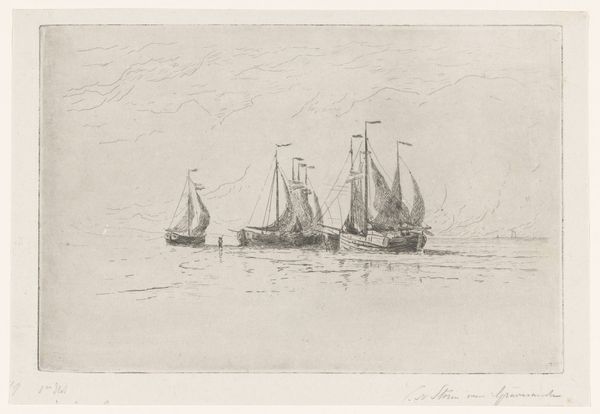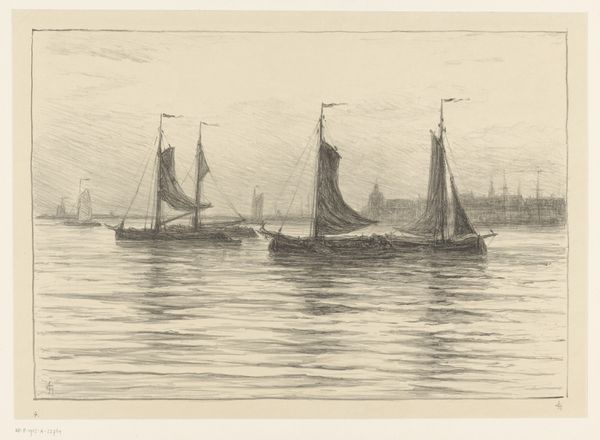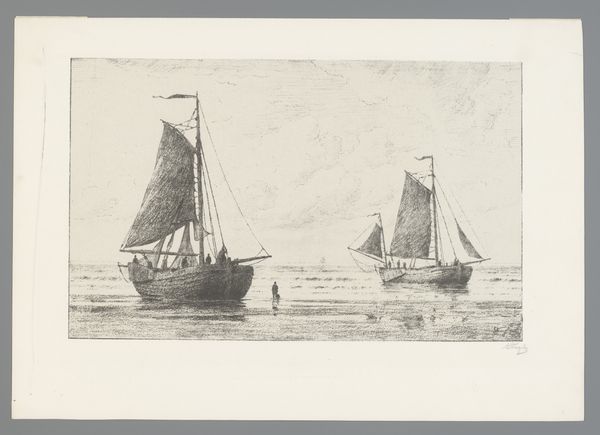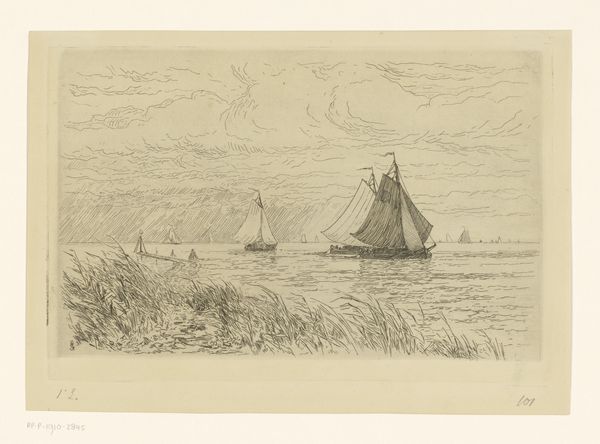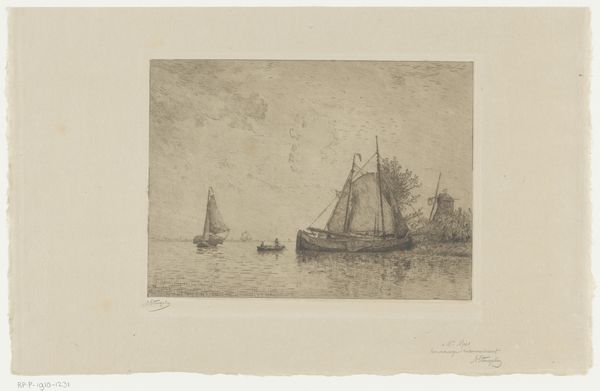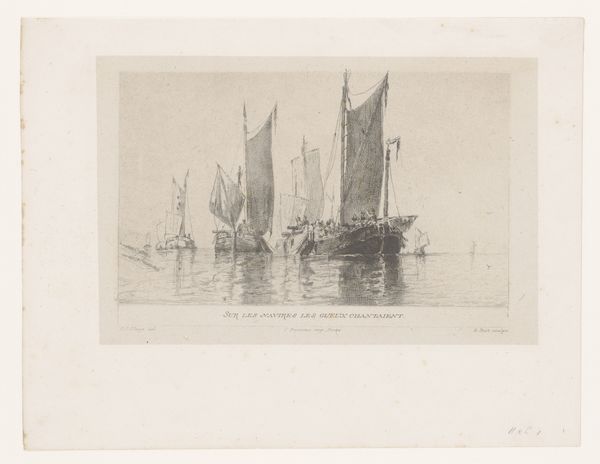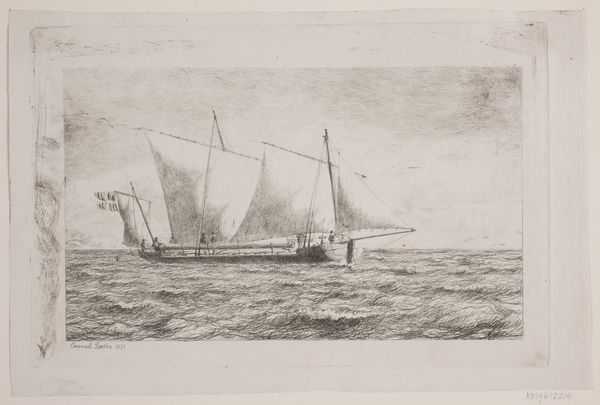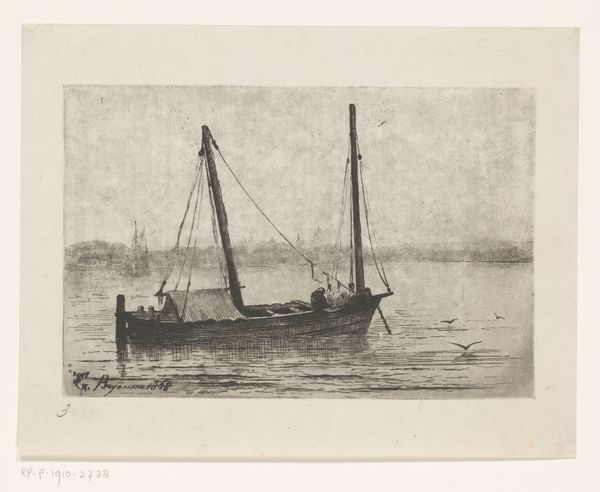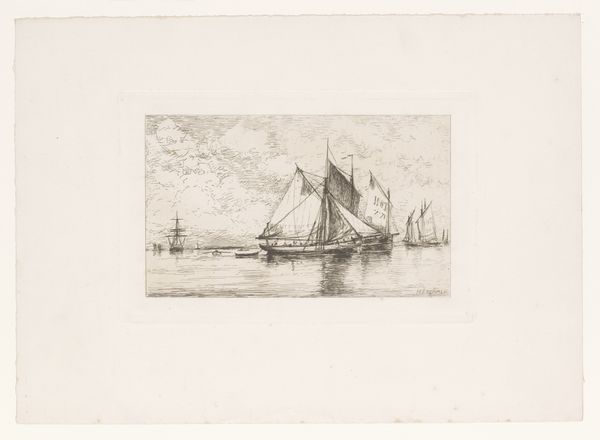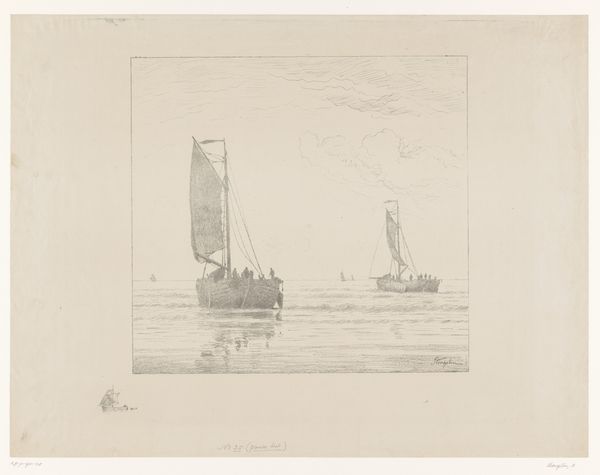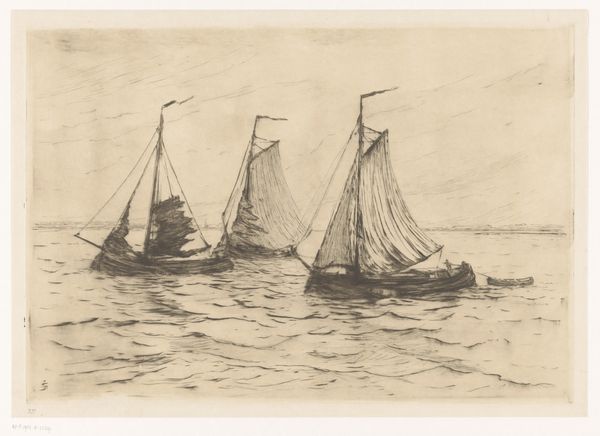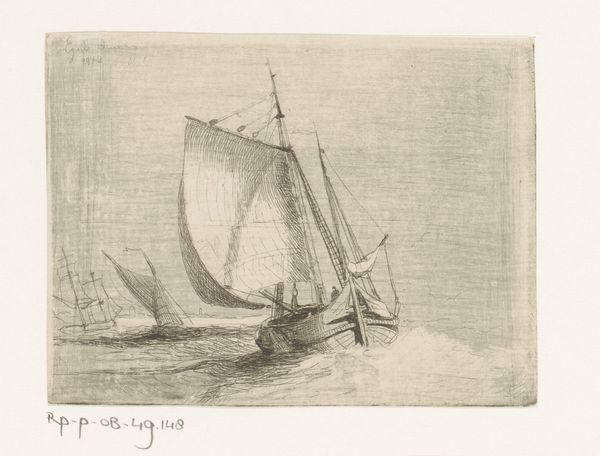
drawing, print, etching
#
drawing
#
dutch-golden-age
# print
#
etching
#
landscape
#
genre-painting
#
realism
Dimensions: height 158 mm, width 317 mm
Copyright: Rijks Museum: Open Domain
Curator: The Rijksmuseum houses this intriguing etching by Carel Nicolaas Storm van 's-Gravesande, titled "Zeilschepen voor anker bij Dordrecht," dating to approximately 1877. It showcases anchored sailing ships. What's your initial impression? Editor: Somber and restrained, almost melancholic. The limited tonal range of the etching contributes to a feeling of quiet stillness. The verticality of the masts and their reflections counterpoints the horizontality of the water, it's delicately balanced. Curator: It's fascinating how 's-Gravesande captures the essence of Dutch maritime life. The sailing ships, frozen at anchor, evoke an age where water was a lifeline and boats symbols of transport, trade and possibly adventure. The symbolism here harkens back to earlier Dutch masters, and the country’s complex relationship to the sea. Editor: True, the boats carry centuries of accumulated cultural significance. From a formal perspective, though, it's the artist's skillful handling of line that captures my attention. Look at the density of hatching in the sails to render shadow versus the delicate, almost wispy lines suggesting the sky and reflections. The overall composition becomes a study in textures, of light interacting with forms. Curator: Absolutely, the textures create a rich, visual field despite the monochromatic palette. Also, notice how the windmill, barely visible on the horizon, represents Dutch ingenuity in managing water, a constant cultural imperative here. Dordrecht as the oldest city in Holland adds historical gravity, layering the artwork with meanings of continuity and endurance. Editor: Right, the windmill is the symbolic anchor to the land itself, subtly framed. Etching's nature lends itself well to this subject—allowing for precise replication but each copy having a distinct material fingerprint. And speaking of prints and reproduction, is there perhaps a message of wider social relevance here? Does printing bring symbolism to the masses, or diminish its symbolic value? Curator: Interesting point! The symbolism is more readily accessible and circulated by its print form. The narrative elements, like the ships, and the implication of commerce connect us through time and history. Editor: Perhaps both—accessibility and nuance—are the values we should recognize in this work. Curator: I agree entirely. It seems, through 's-Gravesande's vision, we gain insight not just into the artwork’s period, but our present and how the images echo across history. Editor: Precisely, and for me, observing the structural elements reveals enduring appeal and the visual story embedded in the details of etched lines, their arrangements, and how they all dance with light.
Comments
No comments
Be the first to comment and join the conversation on the ultimate creative platform.
